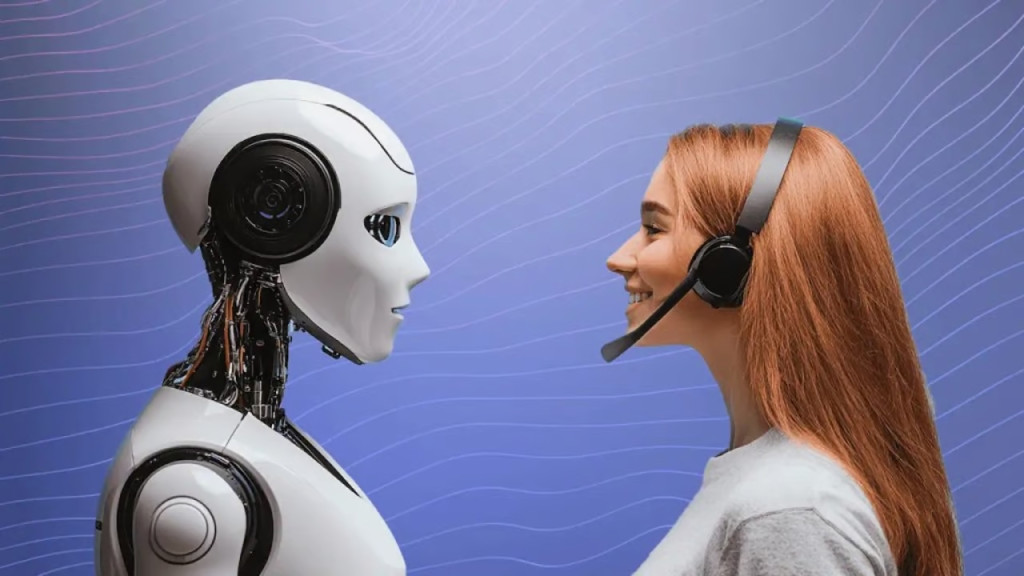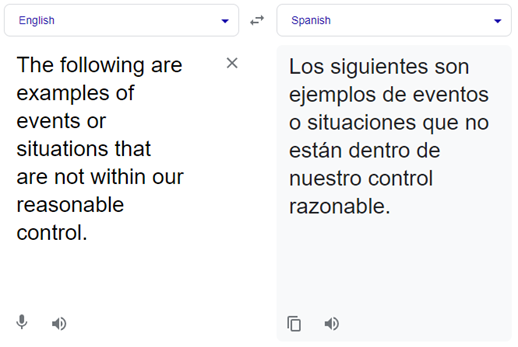
Want your message to travel the world and still feel local wherever it lands? Hybrid localisation is your combo of machine smarts and human flair. Think of it as AI doing the heavy lifting while people add the sparkle.
Whether it’s a website, computer game or product description, hybrid localisation makes sure your message doesn’t just cross borders, it makes it land with style. Fast, flexible, and surprisingly witty, it’s the modern way to speak everyone’s language (without sounding like a robot).
The AI translation space is expanding with lots of buzz, particularly when it comes to multilingual large language models (LLMs). These systems are developed to be advanced, finely tuned, and trained on massive datasets across hundreds of languages. They promise to do everything from streamlining global communication to expanding your profit as your business enters new markets. But now that AI isn’t a novel side tool but something that’s embedded into everything from product development to customer service, it’s time to think about its ability to find nuance and retain cultural sensitivity. Yes, multilingual LLMs can scale quickly, but what about their quality, ethics, and impact on local cultures?
Here’s a look at how LLMs are changing the future of translation and localisation and where they offer true innovation or streamline irreplaceable human input.
What Are Multilingual LLMs?
We built and programmed LLMs, or large language models, to understand and generate human-sounding text. However, LLMs aren’t just Google Translate or DeepL. These tools can convert text between two different languages, but they provide more of a verbatim translation that doesn’t consider the context, nuance, or culture.
You can train LLMs like GPT-4, Gemini and Claude, for more accurate translations with vast collections of texts in multiple languages. They can then use the data and information to translate, summarise, rephrase, or generate content across hundreds of languages. LLMs are highly versatile and can “reason” or parse style guides to switch tone for different audiences and sometimes brush up against the basics of cultural context to produce content that sounds fluent.
Multilingual LLMs and Translation Workflows
With AI’s evolution and multilingual capabilities, it’s only natural to consider how it can be used for translation workflows, localisation, interpretation, etc. Here’s a breakdown of some of its capabilities and limitations.
1. Quickly Draft Low-Risk Content
LLMs are adept at reducing the time spent on generating first and sometimes second drafts. If you have internal communications, memos, knowledge base articles or customer service replies, multilingual LLMs can help, especially in high-volume use cases. If a perfect translation isn’t absolutely necessary, you can use a tool like ChatGPT and get by just fine.
You can also take that first draft that your go-to LLM generated and pass it onto a human for editing. Known as MT post-editing, you get the benefit of the speed and organisation of an LLM and the personalised touch of a human. It’s a win-win.
2. Get Fast Turnarounds for Time-Sensitive Material
What if you need a quick translation? LLMs expedite crisis communications, product recalls, and live event updates within minutes. If speed is absolutely crucial, implementing an LLM can significantly transform your business. You’ll buy yourself valuable time and create a solid foundation to start from, even if you pass on your communications to a human editor.
3. Casually Test Long-Tail Markets
Your business probably has a budget for localisation and transcreation programmes for a handful of core languages. But what about those long-tail languages, including Malay, Swahili, or Ukrainian? You can still test those markets without a significant budget expenditure with the help of an LLM. If you’re not creating sensitive materials or need deep nuance and cultural sensitivity, you can start slow with an LLM to test the market for regional growth.
That’s where the limitations of LLMs lie. It’s still crucial to pass materials to a native-speaking editor and translator to review everything before going live or expanding your marketing any further. Otherwise, you could end up damaging your brand.
 When Do You Still Need Human Translators?
When Do You Still Need Human Translators?
LLMs are impressive and have made rapid gains, but there are also some overwhelming technical and strategic limitations to consider.
1. Transcreation and Emotionally Intelligent Copywriting
LLMs can handle a headline translation or come up with some basic marketing copy in another language. But it cannot localise humour, cultural nuance, idioms, sarcasm, emotional intelligence, or the pacing of a product launch. Native speakers and transcreation experts are skilled at adapting a message for another language and culture. It’s more than just translating one word to another. If you don’t master the subtext, you risk failing in a market before gaining any real momentum.
2. Accuracy and Compliance in Regulated Industries
Mistranslation is more than an embarrassment or inconvenience—it can have legal consequences or harm public safety. LLMs will tell you themselves that they can make mistakes and “hallucinate”. They are known to insert false information and tell you with overwhelming confidence that it’s completely correct. Healthcare, law, finance, and government sectors may require NAATI-certified translations, or ISO or GDPR compliance. Using AI tools as anything but support in these industries is more than foolish. It’s imperative to use a human translator, especially when regulatory language is involved.
3. Contextual Consistency Across Projects
LLMs also don’t remember what you worked on previously unless you give them the context every time. In other words, they struggle with consistency across a long-term project. They won’t remember your brand voice, terminology, or style guide unless you give them more information. Occasionally they’ll remember certain aspects of your tone and how you want to work, but it’s highly unreliable and risky to rely on LLMs as an arm of your team. It makes more sense to use an LLM as part of an overall departmental ecosystem than as a standalone tool.
Creating Hybrid Workflows
Localisation teams aren’t ignoring the fact that AI has arrived and can be useful. Instead, forward-thinking teams are creating hybrid workflows, combining human translators, interpreters, transcreation experts, LLMs, and other automation tools to maximise their productivity and accuracy. Here are some examples of use cases.
- LLM generates a first draft before being sent to subject matter experts and licenced translators for editing and accuracy.
- An automation tool briefly summarises a document for quick internal use instead of spending resources tapping an interpreter to translate it.
- LLMs use the document to create marketing materials using different tones and cadences, depending on the market and whether it should be formal or casual.
- A human transcreation expert digs deeper into the text to create a more nuanced approach to the campaign.
- AI looks over the finished materials and creates a brief for an internal meeting, recording it for stakeholders who can’t be there.
- Stakeholders decide which parts of the project are low-risk and can be AI-supported to free up time and budget.
The goal is to use AI to streamline the process and take out the tedious aspects of a project. However, substituting the human element with AI exposes your business to potential brand damage and legal risks.
Risks to Relying on AI
Even if you feel confident in using AI and think your projects are low risk, there are still some dangers to using LLMs.
1. Data Privacy and IP Risks
Did you know that when you upload documents to public AI tools to translate them, you could be exposing sensitive or confidential information? Many AI tools save and reuse the data they’re given to improve their models. You may be violating client confidentiality and breaking the terms of your contract without even realising it.
2. Language Bias
LLMs rely on the data they receive to undergo training. If they aren’t as familiar with underrepresented languages or language variants that have less content online, you may end up with poor results filled with errors and poor phrasing. The consequence? You could encounter a world of ethical concerns. Not knowing how well the documents were translated, you could be giving marginalised communities incorrect information without giving it a second thought.
3. Fluency Bias
LLMs sound incredibly fluent even when they’re entirely wrong and hallucinating. They may sound factual, tell you where they found the information, and have perfect grammar but are providing a document riddled with errors. As a result, you develop fluency bias, believing that something is correct simply because it sounds right. Meanwhile, a trained, licenced translator can quickly spot mistranslations, ambiguous phrasing, and cultural mismatches.
AI Can Augment, But Not Replace, the Human.
Multilingual, large language models are powerful and already shaping how teams approach localisation. They can make the way we work faster, more scalable, and more accessible across even remote languages. But translation isn’t just a mechanical process. It’s also cultural, contextual, and relational.
The question we should be asking isn’t whether or not the future is about choosing between humans and AI. It’s about how we should optimise our workflows to leverage the strengths of AI and bridge the gaps. We still need human translators for clarity, tone, accuracy and trust. AI can’t replace that. When used properly, LLMs help you deliver at scale while freeing up your human talent to focus on the work machines still can’t do.


